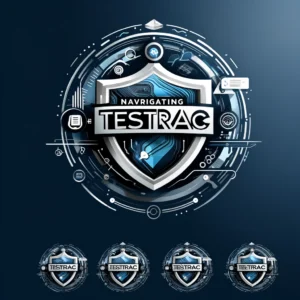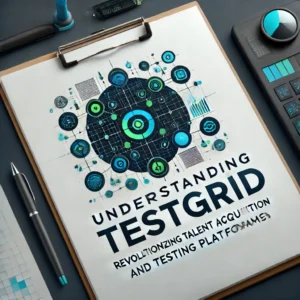EdTech Showdown: A Comprehensive Look at LMS vs. E-Assessment
In today’s digital learning landscape, Learning Management Systems (LMS) and e-assessments stand as two powerful tools that are shaping the future of education. While these platforms share the common goal of enhancing the learning experience, they differ significantly in their approach to assessing student progress and performance. Understanding these differences is crucial for educators and institutions aiming to provide a well-rounded and effective educational experience.
The Role of Learning Management Systems (LMS)
A Learning Management System (LMS) is a comprehensive digital platform designed to manage, deliver, and track educational courses and training programs. Initially developed for the e-learning industry, LMSs have become indispensable in both academic and corporate settings. They serve as a centralized hub for educational content, including videos, documents, quizzes, and forums. During the COVID-19 pandemic, LMS platforms became essential for facilitating remote learning, offering tools that go beyond content delivery to include features like automated course recommendations, learning gap identification, and performance evaluation.
However, while LMS platforms often include basic assessment tools, these are typically geared toward formative exams rather than the more complex, high-stakes summative assessments. The limitations of LMS testing modules have led to the rise of specialized e-assessment platforms, which offer more advanced and flexible testing methodologies.
The Evolution and Advantages of E-Assessment
E-assessment platforms have emerged as a critical component in the digital education ecosystem, offering a range of benefits that address the shortcomings of traditional LMS-based assessments. These platforms are designed specifically to enhance the assessment process, providing a more nuanced, personalized, and secure testing environment. Here’s why e-assessment platforms are becoming increasingly popular:
1. Enhanced Security Measures
E-assessment tools are equipped with sophisticated security features that safeguard the integrity of the testing process. These include lockdown browsers, AI-driven proctoring, and copy-paste restrictions, all designed to prevent cheating and ensure a fair assessment environment. As AI technologies like ChatGPT become more prevalent, the focus on securing exams has intensified, making the advanced security features of e-assessment platforms more critical than ever.
Additionally, these platforms prioritize data privacy through encrypted storage and compliance with stringent privacy regulations, ensuring that both educators and students can trust that their personal information is secure.
2. Superior Feedback and Analysis
One of the standout features of e-assessment platforms is their ability to provide real-time feedback and detailed analysis. This immediate feedback loop allows students to quickly identify areas of strength and weakness, facilitating more effective learning and improvement. For example, AKAD University in Germany leverages e-assessment tools to provide not only correct/incorrect feedback but also detailed explanations for why a student’s answer was wrong, thereby deepening their understanding of the material.
E-assessment platforms also offer personalized learning recommendations based on a student’s performance, guiding them toward resources and modules that address their specific learning needs. This level of personalized feedback is something that traditional LMS platforms often struggle to provide.
3. Scalability and Integration
E-assessment platforms are built to scale, making them ideal for use in a variety of educational settings, from small classrooms to large universities. They can handle large numbers of students taking assessments simultaneously without the risk of technical issues or server overloads.
Moreover, these platforms can seamlessly integrate with other educational tools and systems, creating a unified experience for both educators and learners. This integration capability allows institutions to streamline their processes, from exam booking to credentialing, all within a single platform.
4. Diverse Question Formats and Engagement
E-assessment platforms offer a wide range of question formats that go beyond the standard multiple-choice or true/false options. Educators can design bespoke exams that align with specific learning objectives and industry standards. For instance, Cirrus Assessment’s integration with STEM learning platform SOWISO allows for the creation of high-level mathematics and science questions that are automatically scored based on the accuracy of the process, not just the final answer.
Interactive content, such as drag-and-drop exercises and multimedia questions, further enhances student engagement. These features make assessments more dynamic and interactive, fostering a deeper understanding of the material.
5. Accessibility and Inclusivity
E-assessment platforms are designed with accessibility in mind, offering features such as screen readers, adjustable fonts, and alternative content formats to ensure that all students, including those with disabilities, have equal access to assessments. Additionally, these platforms promote inclusivity by providing diverse language options and culturally relevant content, ensuring that every student feels represented and valued.
Transitioning to E-Assessment: A Step-by-Step Guide
For institutions considering a transition from LMS-based testing to a dedicated e-assessment platform, the process may seem daunting. However, with a clear roadmap, the transition can be smooth and effective. Here’s a step-by-step guide:
Step 1: Understand Your Destination
- Research E-Assessment Platforms: Explore the features, strengths, and limitations of various e-assessment platforms.
- Evaluate Your Current LMS: Identify the strengths and weaknesses of your LMS’s testing capabilities.
- Conduct a Cost-Benefit Analysis: Consider the long-term value that an e-assessment platform can bring to your institution.
Step 2: Plot Your Course
- Review Your Curriculum: Determine which courses would benefit most from e-assessment capabilities.
- Set Clear Objectives: Define what you hope to achieve with the new platform, such as more diverse testing options or faster feedback cycles.
- Check Technical Compatibility: Ensure the e-assessment platform integrates seamlessly with your existing systems.
Step 3: Navigate the Path
- Start Small with Pilot Testing: Test the e-assessment tool with a small group before rolling it out institution-wide.
- Invest in Training: Provide comprehensive training for educators to ensure they are comfortable using the new platform.
- Support is Key: Utilize the support services offered by e-assessment providers to ensure a smooth transition.
Step 4: Build Bridges
- Consult IT Specialists: Involve your IT team early to ensure seamless data exchange between your LMS and the e-assessment platform.
- Test Integration: Thoroughly test the integrated system to ensure it functions smoothly.
- Maintain a Feedback Loop: Continuously gather feedback from users to refine and improve the system.
Step 5: Stay Updated
- Monitor and Update: Regularly review the e-assessment platform to ensure it continues to meet your institution’s needs. Stay informed about software updates and improvements.
The Future of EdTech: LMS and E-Assessment in Harmony
While LMS platforms excel in managing coursework and formative testing, e-assessment platforms are superior when it comes to high-stakes, summative exams. The two should not be seen as competitors but rather as complementary tools that, when used together, can provide a comprehensive and effective educational experience. For institutions aiming to stay ahead in the digital age, integrating e-assessments into their existing LMS framework is not just a trend—it’s a strategic move toward a more dynamic and inclusive future in education.




